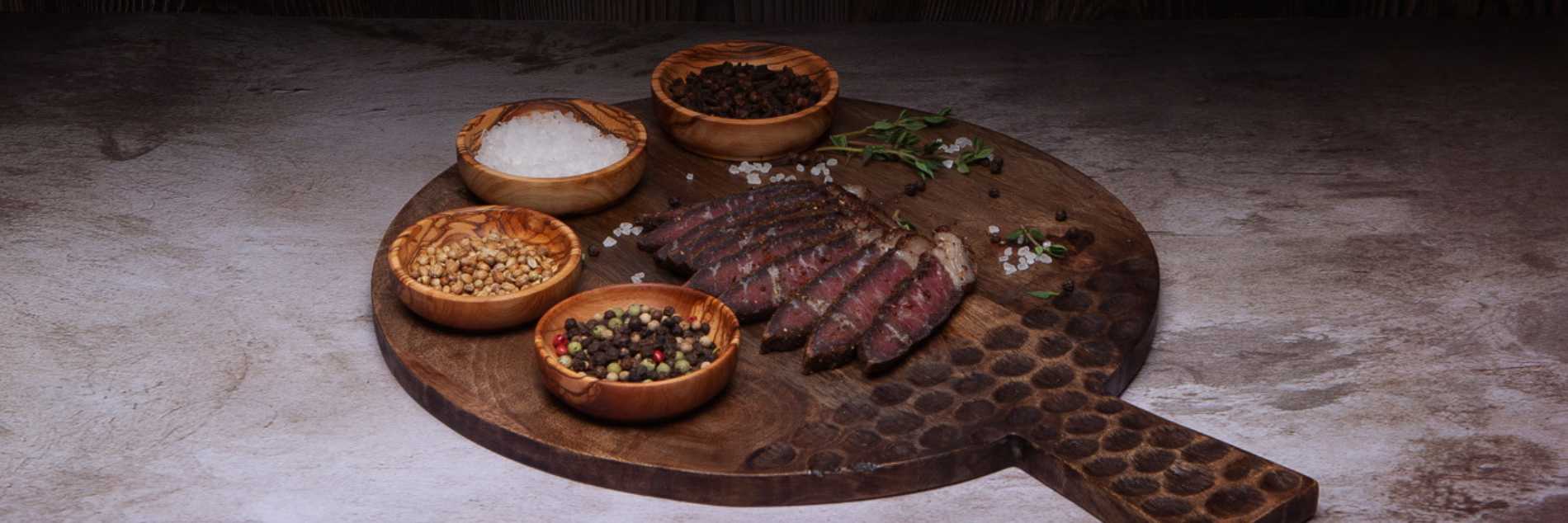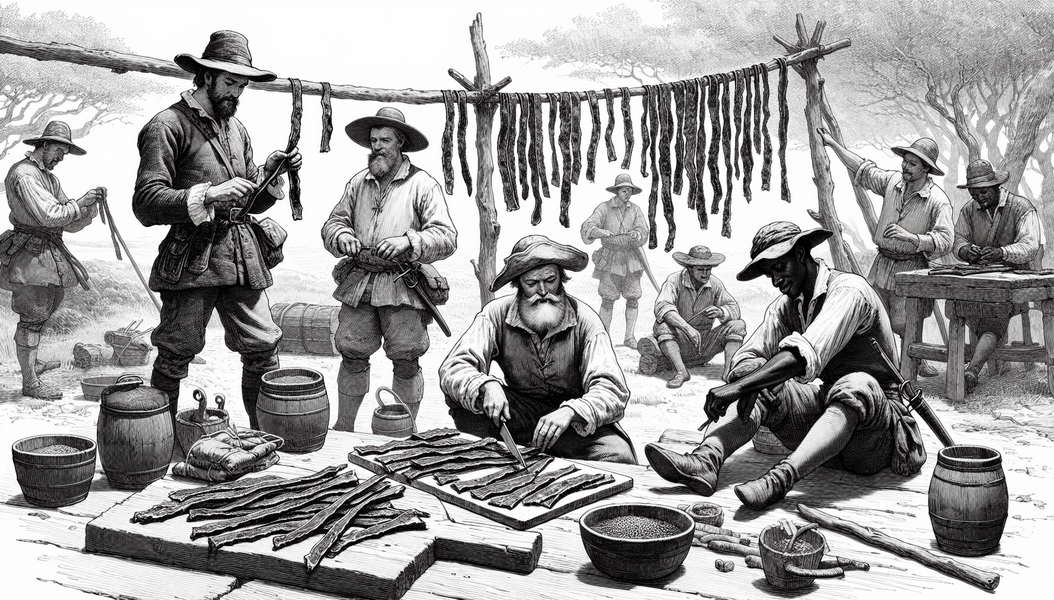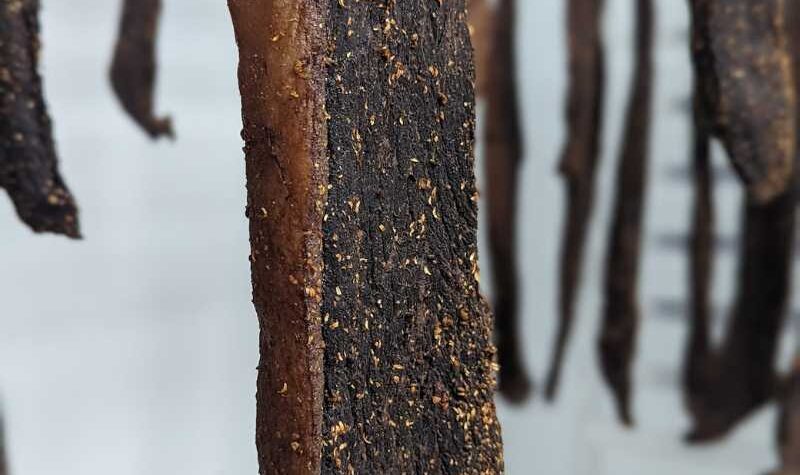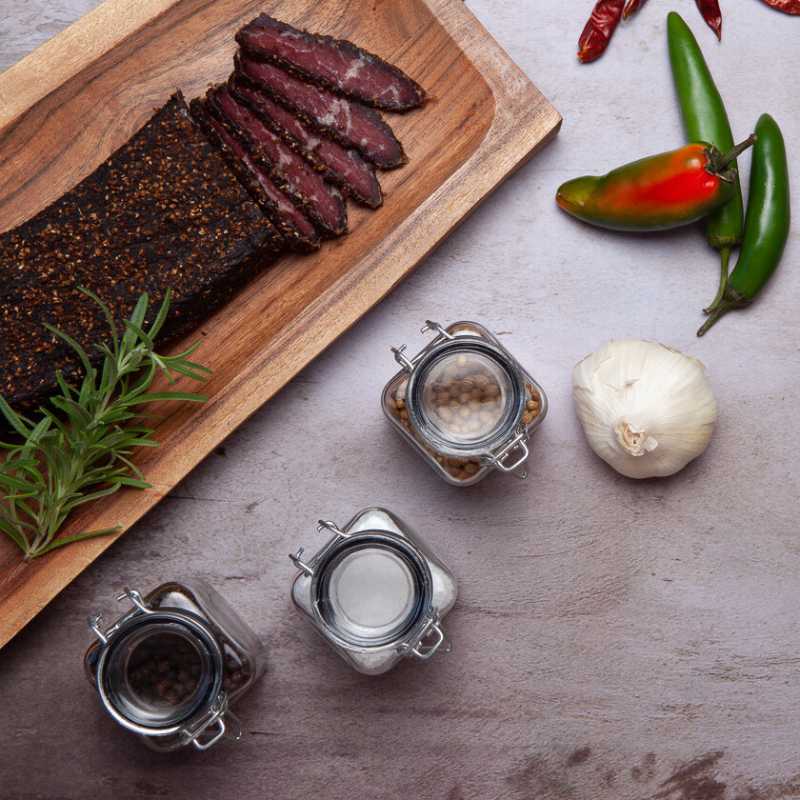What is Biltong?

Table of Contents
Discovering Biltong: A Taste of South African Tradition
The Intriguing World of Biltong
Have you ever caught a whiff of something so tantalizing, so mysterious, that it stopped you in your tracks? That's the power of biltong – a South African delicacy that's been captivating taste buds and hearts for generations. But what is biltong, exactly? Let's embark on a flavorful journey together and uncover the secrets of this beloved snack.
A Slice of History: The Origins of Biltong
From Necessity to Culinary Treasure
Picture this: it's the 17th century, and European settlers are venturing into the vast, untamed wilderness of South Africa. They face a daunting challenge – how to preserve meat in a hot, unforgiving climate without refrigeration. From this need, biltong was born.
The word "biltong" itself tells a story. It comes from the Dutch words "bil" (meaning rump) and "tong" (meaning strip or tongue). Imagine the first settlers carefully cutting strips of meat, seasoning them with salt and spices, and hanging them to dry in the warm African breeze. It's a practice born of necessity but perfected with love and care.

A Tradition Passed Down Through Generations
As time passed, biltong became more than just a way to preserve meat. It became a part of South African culture, a taste of home, and a connection to the past. Families developed their own secret recipes, passing them down from generation to generation. Each bite of biltong carries with it the weight of history and the warmth of tradition.
What Makes Biltong Unique?
The Art of Curing
Biltong isn't just dried meat; it's a labor of love. The process of making biltong is an art form that requires patience, skill, and a deep understanding of flavors. Here's how it typically unfolds:
- Selection of meat: Usually beef, but game meats like kudu or ostrich are also popular.
- Cutting: The meat is cut into strips, following the grain.
- Seasoning: A blend of spices, including coriander, black pepper, and salt, is rubbed into the meat.
- Vinegar bath: The meat is soaked in vinegar, which helps to tenderize it and add flavor.
- Drying: The seasoned strips are hung to dry for several days.
The result? A product that's tender, flavorful, and utterly unique.
A Symphony of Flavors
You're not just tasting meat when you bite into a piece of biltong. You're experiencing a complex symphony of flavors that dance on your tongue. The saltiness hits first, followed by the warmth of the spices. Then comes the rich, meaty flavor, intensified by the drying process. It's a taste that lingers, leaving you craving more.

Biltong vs. Jerky: Understanding the Difference
You might be thinking, "This sounds a lot like jerky." And while there are similarities, biltong and jerky are distinct in several ways:
- Preparation: Jerky is often smoked and cooked at low temperatures, while biltong is air-dried.
- Texture: Biltong is typically softer and more tender than jerky.
- Flavoring: Biltong relies more on vinegar and simple spices, while jerky often includes sugar and a wider variety of seasonings.
- Thickness: Biltong is usually cut into thicker strips than jerky.
The Emotional Connection to Biltong
A Taste of Home
For South Africans living abroad, biltong is more than just a snack. It's a connection to their roots, a taste of home that can transport them back to childhood memories with just one bite. The smell of biltong drying can evoke powerful emotions, reminding people of family gatherings, outdoor adventures, and the comfort of familiar places.
"Biltong isn't just food; it's a piece of my heart, a reminder of where I come from and who I am."
- A South African expat
Bringing People Together
Food has an incredible power to unite people; biltong is no exception. Sharing biltong is a social act, a way of welcoming someone into your circle. It's often brought out at gatherings, sporting events, or as a gift to friends. The act of sharing biltong is an expression of love and friendship.

The Health Benefits of Biltong
Beyond its rich cultural significance, biltong also offers several health benefits:
- High in protein: Perfect for athletes or anyone looking to increase their protein intake.
- Low in fat: Especially if made from lean cuts of meat.
- Rich in nutrients: Contains vitamins B12, iron, and zinc.
- No added sugar: Unlike many processed snacks.
These benefits make biltong a tasty treat and a smart choice for health-conscious snackers.
Exploring Biltong Varieties
Different Meats, Different Flavors
While beef is the most common type of biltong, the variety doesn't stop there. Adventurous eaters can explore biltong made from:
- Ostrich: Lean and slightly sweet.
- Kudu: A game meat with a delicate flavor.
- Springbok: Another game meat, known for its tenderness.
- Chicken: A lighter alternative to red meat.
Each type of meat brings its own unique flavor profile to the biltong experience.
Spice Variations
The spices used in biltong can vary widely, allowing for a range of flavor experiences:
Traditional: Coriander, salt, and black pepper.
Peri-peri: For those who like a spicy kick.
Garlic: Adding a savory depth to the flavor.
Chutney: A sweet and tangy twist on the classic.
How to Enjoy Biltong
Biltong is incredibly versatile. Here are some ways to incorporate it into your culinary adventures:
As a standalone snack: The most traditional way to enjoy biltong.
In salads: Adds protein and flavor to fresh greens.
On pizzas: A unique topping that adds a South African flair.
In stews: Rehydrated biltong can add depth to soups and stews.
As a pairing with wine or beer: The perfect savory complement to your favorite beverage.
The Global Spread of Biltong
While deeply rooted in South African culture, biltong has been gaining popularity around the world. Specialty shops and online retailers are making it easier for people everywhere to experience this unique delicacy. As more people discover biltong, it's becoming a beloved snack far beyond its country of origin.
Preserving Tradition in a Modern World
In an age of fast food and mass production, biltong stands as a testament to the value of tradition and craftsmanship. Each piece of biltong carries with it centuries of history, the care of skilled artisans, and the love of those who have passed down recipes through generations.
Conclusion: More Than Just a Snack
So, what is biltong? It's a dried meat snack, yes, but it's so much more than that. It's a piece of history, a cultural icon, a healthy indulgence, and a way to connect with others. Whether you're a South African missing the tastes of home, or someone curious about exploring new flavors, biltong offers a unique and delicious experience.
As you take your first bite of biltong, remember that you're not just tasting food – you're participating in a centuries-old tradition. You're connecting with the spirit of South Africa, with the ingenuity of those who came before, and with the joy of those who have shared this beloved snack throughout the years.
So go ahead, try some biltong. Let its flavors transport you to sun-drenched plains and bustling markets. Let it spark your curiosity and ignite your taste buds. Who knows? You might just find that biltong becomes more than just a snack – it might become a new tradition of your own.











